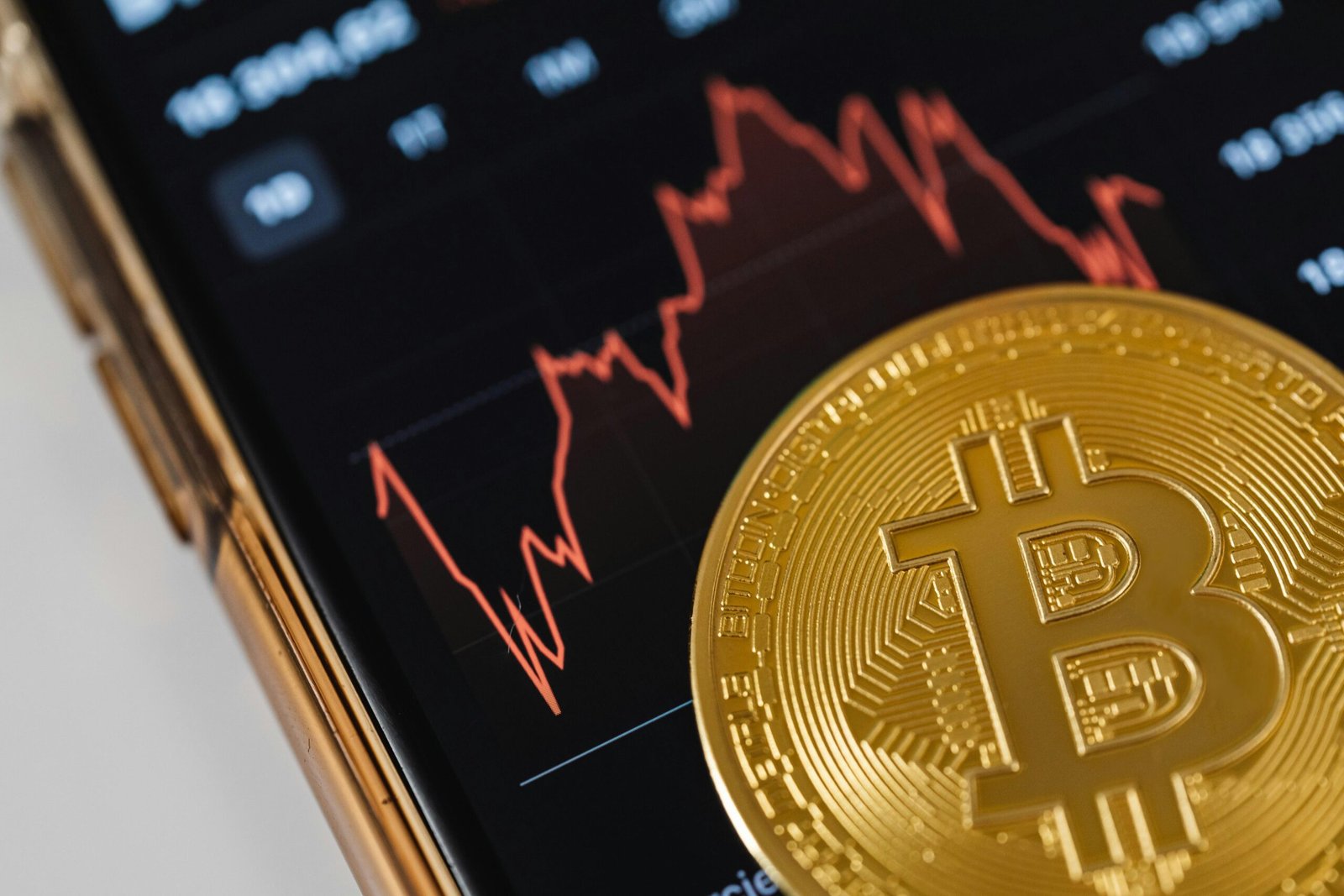Bitcoin Transaction Confirmation: A Comprehensive Guide 2024

Introduction
What is Bitcoin?
This ensures transparency, and security, and eliminates the need for intermediaries like banks. But to truly appreciate Bitcoin, we need to understand how its transactions work and why confirmations are crucial.
Understanding Bitcoin Transactions
How do Bitcoin transactions work? At its core, a Bitcoin transaction involves sending a certain amount of Bitcoin from one address to another. Think of it as a digital handshake. However, unlike handing over physical cash, Bitcoin transactions need to be verified and recorded on the blockchain. This is where miners come in. Miners use computational power to solve complex mathematical problems, verifying transactions and adding them to the blockchain.
What is a Bitcoin Transaction Confirmation?
A Bitcoin transaction confirmation is the process by which a Bitcoin transaction is verified and added to the Bitcoin blockchain. When you send Bitcoin to someone, it is broadcast to the Bitcoin network but remains unconfirmed until miners include it in a block. Miners are individuals or entities that use computational power to solve complex mathematical problems, validating transactions and adding them to the blockchain.
Each confirmation means that the transaction has been included in one block, and as new blocks are added to the blockchain, the transaction gains more confirmations. These increase the transaction’s security, making it more difficult to reverse or alter. Typically, one to three are sufficient for smaller transactions, while larger transactions may require six or more confirmations to ensure they are secure and final.
The Confirmation Process
The process in Bitcoin transactions involves several key steps to ensure that each transaction is secure and permanently recorded on the blockchain.
- Transaction Broadcast: When a Bitcoin transaction is initiated, it is broadcast to the Bitcoin network. This means the transaction details are shared with all the nodes (computers) connected to the network.
- Mempool Waiting: Once broadcasted, the transaction enters the mempool (short for memory pool). The mempool is where all pending transactions wait to be picked up by miners.
- Mining and Block Inclusion: Miners collect transactions from the mempool and add them to a new block. To add a block to the blockchain, miners must solve a complex cryptographic puzzle, which requires significant computational power.
- Block Validation: Once a miner successfully solves the puzzle, a new block is proposed to the network. Other nodes then validate the block and its transactions to ensure everything is in order. If the block is valid, it is added to the blockchain, and all included transactions receive their first confirmation.
- Additional Confirmations: Each new block added to the blockchain following the one containing your transaction offers another. For example, if your transaction is in block 600,000, and the blockchain is currently at block 600,005, your transaction has six confirmations.
- Security Through Confirmation: The more a transaction receives, the more secure it becomes. This is because altering a transaction would require an attacker to redo the proof of work for that block and all subsequent blocks, which is computationally impractical and highly unlikely.
By understanding this process, you can see how the Bitcoin network ensures the integrity and security of transactions, making it a reliable and trustworthy system for transferring value.
Factors Affecting Confirmation Times
Various factors can affect how quickly your Bitcoin transaction gets confirmed. These include transaction fees, network congestion, and transaction size.
Transaction Fees
Transaction fees play a significant role in the speed. Miners prioritize transactions with higher fees because they get to keep these fees as a reward for their work. If you want your transaction to be confirmed quickly, it’s essential to set a competitive fee.
Network Congestion
Network congestion occurs when there are more transactions being broadcast than the network can handle promptly.
Transaction Size
The size of your transaction, measured in bytes, also impacts confirmation times. Larger transactions require more space in a block and may take longer to be picked up by miners, especially if the fees are not adequately adjusted.
Why Transaction Fees Matter
Why do transaction fees matter so much? They essentially act as a bidding system. If you set a low fee, your transaction might be pushed to the back of the queue, leading to longer confirmation times. To ensure a timely confirmation, it’s wise to check the current recommended fees and adjust yours accordingly.
Understanding Network Congestion
Network congestion can be a real pain, but it’s part of the decentralized nature of Bitcoin. Congestion happens when there’s a surge in transaction volume, such as during a market boom or significant news events. This results in a backlog of unconfirmed transactions, making the confirmation process slower.
The Role of Transaction Size
Transaction size matters more than you might think. Larger transactions take up more space in a block and might be deprioritized if the network is busy. To minimize your transaction size, consider consolidating smaller inputs into larger ones when possible.
Speeding Up Bitcoin Transaction Confirmations
If you’re in a hurry, there are ways to speed up the confirmation process. One of the most effective methods is to increase the transaction fee. By doing so, you make your transaction more attractive to miners. Additionally, using Segregated Witness (SegWit) and batching multiple transactions together can help reduce the transaction size, speeding up the confirmation process. The Lightning Network, a second-layer solution, offers near-instantaneous transactions by conducting them off-chain and only settling on the blockchain later.
Tools to Monitor Transaction Confirmations
To keep track of your transaction confirmations, several tools are available. Block explorers like Blockchain.com and Blockchain provide real-time information on transaction status, while many wallets offer notification features to alert you when your transaction is confirmed.
Common Issues and Solutions in Bitcoin Transaction Confirmations
Bitcoin transaction confirmations can sometimes encounter issues that cause delays or complications.
- Stuck Transactions
- Issue: A transaction is stuck in the mempool and not being confirmed.
- Solution: This often happens due to low transaction fees. You can use the Replace-by-Fee (RBF) option to increase the fee and make the transaction more attractive to miners. Some wallets support this feature, allowing you to resend the transaction with a higher fee.
- Low Transaction Fees
- Issue: Setting a low transaction fee can result in delayed confirmations, especially during times of high network congestion.
- Solution: Always check the current recommended fees before sending a transaction. Websites like Mempool.space or your Bitcoin wallet can provide real-time fee recommendations. Setting a higher fee ensures faster confirmation.
- Network Congestion
- Issue: The Bitcoin network is congested, leading to longer confirmation times.
- Solution: During periods of high congestion, it might be necessary to wait longer for confirmations. Using SegWit (Segregated Witness) addresses can also help reduce transaction size and fees.
- Double-Spending Risks
- Issue: Double-spending occurs when someone tries to spend the same Bitcoin in two different transactions.
- Solution: To avoid this risk, wait for multiple confirmations before considering a transaction final. Six confirmations are typically recommended for higher-value transactions to ensure security.
- Unconfirmed Parent Transactions
- Issue: Your transaction depends on a previous transaction (parent) that is still unconfirmed.
- Solution: If a parent transaction is unconfirmed, your transaction will also remain unconfirmed. Increasing the fee for the parent transaction can help speed up both transactions.
- Transaction Size
- Issue: Large transactions (in bytes) can take longer to confirm, especially if the fee is not proportionally higher.
- Solution: Minimize transaction size by consolidating smaller inputs into larger ones. Using SegWit can also reduce the size and cost of transactions.
- Accidental Low Fee Settings
- Issue: You accidentally set a low fee, causing your transaction to be delayed.
- Solution: If your wallet supports it, use the Replace-by-Fee (RBF) feature to resend the transaction with a higher fee. Another option is to use a transaction accelerator service, which some mining pools offer to prioritize your transaction for a fee.
- Expired Transactions
- Issue: A transaction can expire and be dropped from the mempool if it remains unconfirmed for too long.
- Rebroadcasting: A transaction is necessary if it is removed from the mempool.Before doing this, consider increasing the fee to avoid further delays.
By understanding these common issues and their solutions, you can better navigate the Bitcoin network and ensure your transactions are confirmed in a timely and secure manner.
Future of Bitcoin Transaction Confirmations
The future of Bitcoin transaction confirmations looks promising, with continuous technological advancements aimed at improving the process. Innovations like the Lightning Network and improvements in blockchain technology promise faster and more efficient transaction processing. However, challenges like scalability and regulatory issues remain, requiring ongoing solutions and adaptations.
Conclusion
Bitcoin transaction confirmations are a fundamental aspect of the cryptocurrency’s ecosystem, ensuring security and trust in the network. By understanding how confirmations work and the factors affecting them, users can navigate the Bitcoin network more effectively and make informed decisions. Whether you’re making a small purchase or a significant investment, knowing how to manage transaction confirmations will enhance your Bitcoin experience.
FAQs
- How long does a Bitcoin transaction take to confirm?
- The time for a Bitcoin transaction to confirm can vary from a few minutes to several hours, depending on network congestion and the transaction fee set.
- What happens if a transaction is not confirmed?
- If a transaction is not confirmed, it remains in the pending state in the mempool. It may eventually be dropped by the network if not confirmed within a certain period.
- Can I speed up a slow Bitcoin transaction?
- Yes, you can speed up a slow transaction by increasing the transaction fee or using a transaction accelerator service.
- How many confirmations are considered safe?
- For small transactions, one to three confirmations are usually sufficient. For larger transactions, six or more confirmations are recommended for enhanced security.
- Are zero-confirmation transactions risky?
- Yes, zero-confirmation transactions are risky because they haven’t been added to the blockchain yet and can be reversed or double-spent.





One thought on “Bitcoin Transaction Confirmation: A Comprehensive Guide 2024”